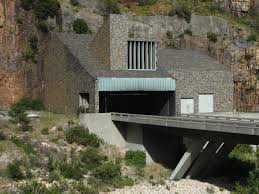Introduction
The Huguenot Tunnel, situated along the N1 highway in South Africa, stands as a vital piece of infrastructure linking the Western Cape with the northern regions. Opened in 1997, this engineering marvel not only shortens travel time but also enhances safety by providing a reliable alternative to the historically treacherous pass. Understanding its importance in contemporary transport is crucial as it continues to impact local trade, tourism, and commuting.
Construction and Design
The construction of the Huguenot Tunnel was a significant undertaking, guided by imperative safety and engineering standards. Stretching approximately 3.9 kilometers, the tunnel took four years to complete at a cost of around R560 million. Its design incorporates a state-of-the-art drainage system and emergency access points, ensuring the safety of vehicles using the route during adverse weather or unforeseen incidents.
Economic and Transport Significance
Since its opening, the Huguenot Tunnel has drastically reduced travel time between the busy Cape Town metropolitan area and the northern provinces, contributing to economic growth. The tunnel currently supports an estimated 22,000 vehicles per day, facilitating trade between various regions. Local industries, including agriculture and tourism, have reported increased efficiency in logistics due to the tunnel’s capabilities. Additionally, tourists heading to scenic destinations in the region benefit from a smoother and safer journey.
Recent Developments
In light of the growing traffic and subsequent wear on infrastructure, the South African National Roads Agency Limited (SANRAL) announced several enhancements for the Huguenot Tunnel. Maintenance work is underway to modernize systems such as lighting and ventilation to improve user experience and safety. Furthermore, ongoing discussions about potential expansions to accommodate future traffic demands reflect the tunnel’s central role in South Africa’s transport strategy.
Conclusion
The Huguenot Tunnel remains a critical element of South Africa’s infrastructure, facilitating economic growth and ensuring safe travel through the Du Toitskloof Mountains. As regional demands grow and traffic increases, planned upgrades and expansions are imperative to maintain its role in both local and national transport networks. Staying informed about developments related to the Huguenot Tunnel can help travelers, businesses, and stakeholders make strategic decisions and prepare for future transit alternatives.


